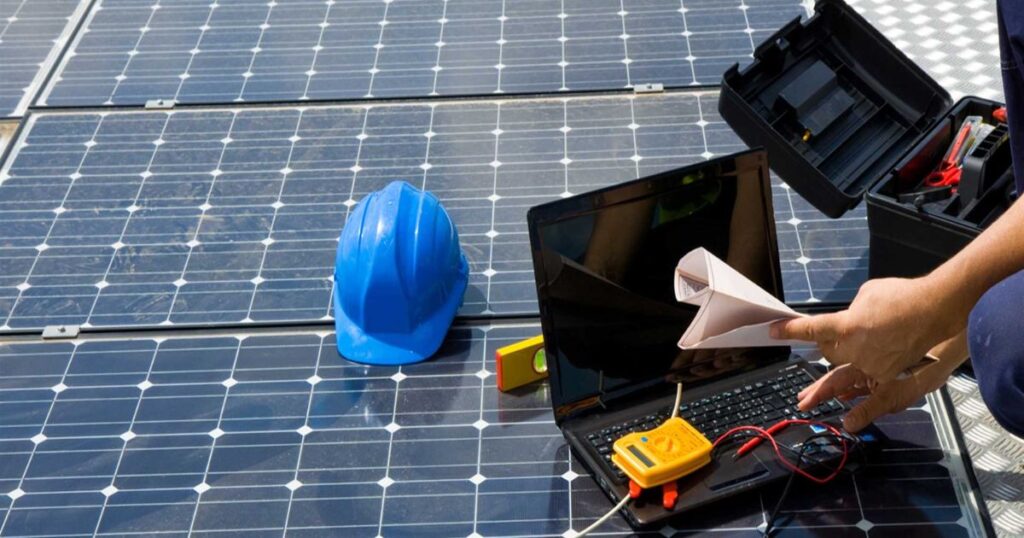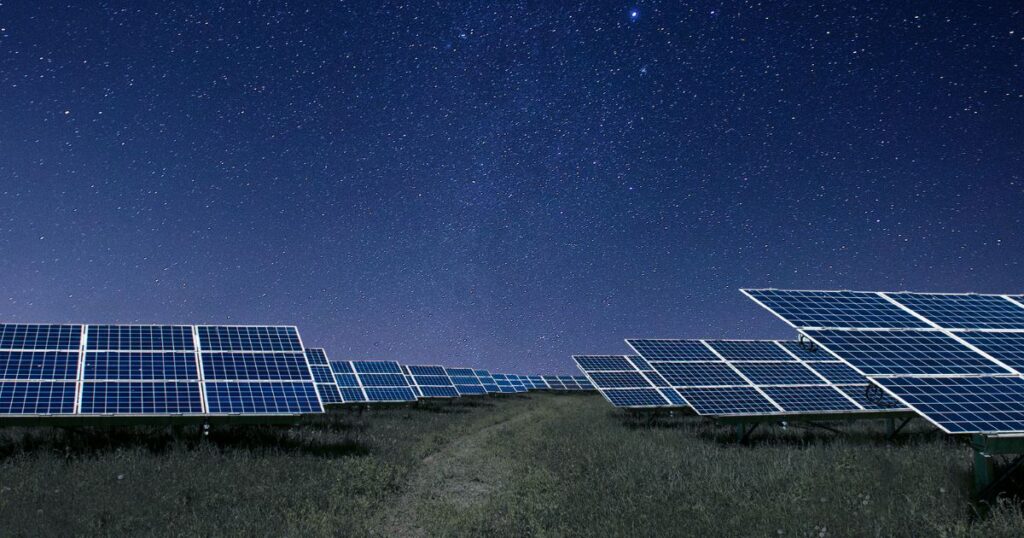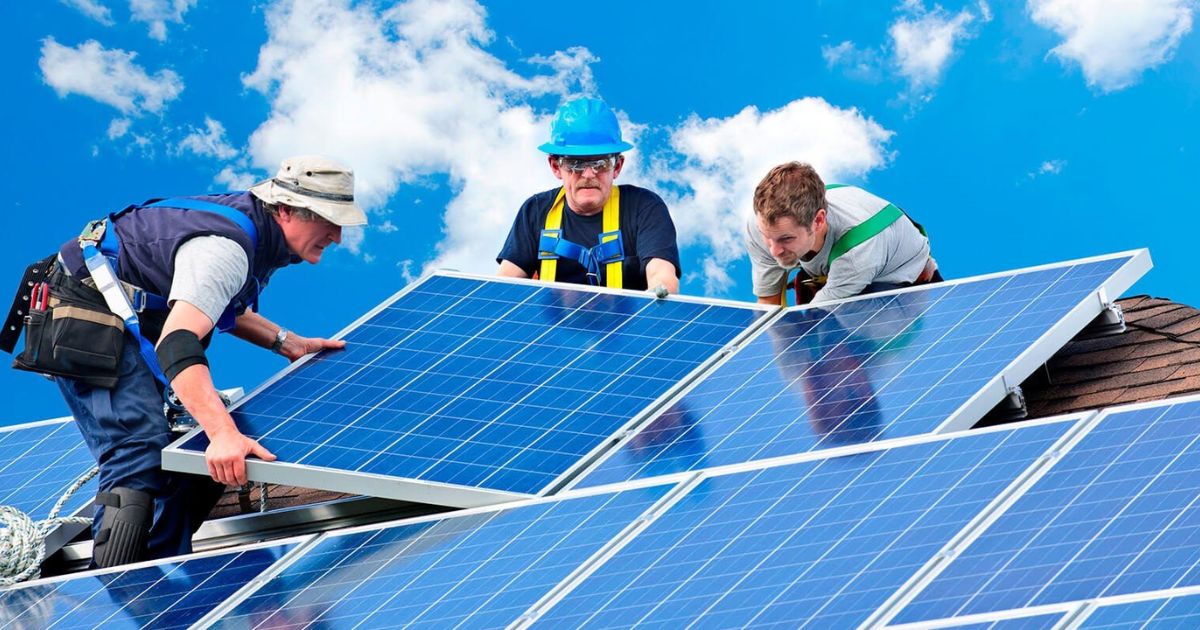The XCV Panel refers to a cutting-edge technology very useful in the USA. It boasts numerous features such as high durability, enhanced thermal performance, and excellent resistance to corrosion. With its versatile application, The XCV Panel is widely used in construction, architecture, and industrial sectors, offering superior protection and aesthetic appeal.
XCV Panel users benefit from several features. Its advanced features provide significant insulation, reducing energy consumption and costs. Its easy installation process makes it a preferred choice for contractors. While the XCV Panel is a popular option, alternatives such as aluminum and steel panels are available, depending on specific project requirements. It is essential to follow the installation guide provided by the manufacturer to ensure proper and efficient installation.
What is the Xcv Panel?
The XCV Panel, or Extreme Convergence Visual, is a revolutionary display technology. It transcends traditional screens, combining cutting-edge visuals with unparalleled versatility. Emerging from research labs, XCV Panels now span industries, redefining visual experiences with high resolution and energy efficiency.
XCV Panels have evolved significantly since their inception. Beginning as experimental wonders in research labs, they quickly gained recognition. From industrial adoption in automotive and aerospace to mainstream integration in smartphones and laptops, XCV Panels now shine across diverse applications, offering flexibility and exceptional display performance.
Who Is Founder Of XCV Panel?
XCV Panel’s Founder
In 2022, Richard Parker, a tech luminary, founded XCV Panel with a vision for renewable energy. Parker’s commitment to innovation and sustainable practices led to the creation of XCV Panels, marking a transformative leap in solar technology.
Visionary Drive
Renowned for his tech acumen, Parker’s venture into solar energy reflects a profound enthusiasm for the transformative capacity of renewable resources. XCV Panels epitomizes his commitment to revolutionizing energy production through cutting-edge technology.
Richard Parker
In 2022, Richard Parker, a distinguished figure in the tech world, founded XCV Panel, a revolutionary venture in solar technology. Known for his innovative contributions, Parker’s commitment to renewable energy has been a driving force behind the creation of XCV Panels.
His exploration of various technology ventures has nurtured a profound enthusiasm for sustainable practices, coupled with a firm belief in the transformative capacity of solar power. As the founder of XCV Panel, Parker’s vision is shaping the future of energy production by introducing advanced solar panels designed for efficiency, durability, and environmental friendliness.
| Name | Richard Parker |
| Occupation | Zookeeper |
| Nationality | British |
| Birthdate | May 15, 1980 |
| Birthplace | London, England |
| Education | B.Sc. in Zoology |
| M.Sc. in Wildlife Conservation | |
| Work Experience | – Senior Zookeeper at London Zoo (2005-present) |
| – Wildlife Conservation Officer at World Wildlife Fund (2002-2005) | |
| – Field Researcher at Oxford University (1999-2002) | |
| Achievements | – Published research papers on animal behavior and conservation |
| – Awarded the Wildlife Conservation Excellence Award (2010) | |
| – Presented at international conferences on wildlife conservation | |
| Interests | – Animal behavior and communication |
| – Wildlife conservation and habitat restoration | |
| – Photography and documenting wildlife | |
| Languages | English (fluent) |
| French (intermediate) | |
| Spanish (basic) |
How does the Xcv Panel work?
XCV Panels operate on the principle of converting light rays into images. Comprising micro-level pixels capable of emitting light independently, each pixel releases light to form an image on the screen when current is applied. This mechanism ensures exceptional display performance without distractions, creating a seamless visual experience.
The XCV Panels boast superior color reproduction, minimizing motion blur and ghosting with their faster response time. Their energy-efficient design extends battery life in portable devices, and their thin, lightweight structure makes them ideal for various applications. High refresh rates contribute to enhanced gaming experiences and smoother animations.
How to manufactures XCV panel?

These types of materials are used to manufacture the solar Panel.
- Material Selection: Top-quality materials like silicon wafers and tempered glass are chosen for durability and efficiency.
- Solar Cell Assembly: A grid of interconnected solar cells with metal contacts is created to capture sunlight energy effectively.
- Encapsulation: Cells are sealed with protective glass and framed to enhance durability and protect against environmental factors.
- Backsheet and Frame: Additional insulation is provided with a backsheet, and a frame ensures structural support.
- Electrical Wiring: Cells are interconnected to optimize energy flow within the panel.
- Quality Control: Rigorous inspections and tests are conducted to ensure panels meet efficiency and safety standards.
- Testing and Certification: Performance is verified against industry standards to guarantee reliability.
- Packaging and Distribution: Panels are securely packaged for global distribution, reaching diverse markets.
Features and Benefits of xcv panels
XCV panels set an exceptional collection of benefits and advantages from the rest categories of displays:
XCV Panel Features
- High Resolution: Offers unparalleled visual clarity and resolution for an immersive viewing experience.
- Wide Color Gamut: Ensures vibrant and accurate color representation, enhancing visual quality.
- Fast Response Time: Enhances overall display performance with quick response, minimizing motion blur.
- Low Power Consumption: Categorized as energy-saving devices, XCV Panels consume less energy, optimizing efficiency.
- Flexibility: Available in various sizes and shapes, making them suitable for diverse designs and curved displays.
XCV Panel Benefits
- Exceptional Viewing Experience: XCV Panels redefine display quality, providing maximum battery timing on smartphones and tablets.
- Enhanced Productivity: Laptops and monitors with XCV Panels deliver more accurate images and videos for improved productivity and entertainment.
- Smooth Gameplay: Gaming consoles equipped with XCV Panels result in smooth gameplay, reducing input lag for a better gaming experience.
- Critical in Various Industries: From medical imaging to aviation displays, XCV Panels offer crucial applications, contributing to advancements in different sectors.
- Efficient Advertising: XCV Panels in advertising displays effectively capture audience attention with visually striking displays.
How much Xcv Panels energy is produced?
XCV Panels utilize sunlight to produce electricity efficiently. The energy output ranges from 1,500 to 2,000 kilowatts per hour, contingent on sunlight quality and direct exposure. Enhanced placement in direct sunlight boosts conversion efficiency. Optimal conditions and methods contribute to maximizing energy production. The placement of solar panels strategically enhances direct sunlight exposure, while other measures can increase overall energy production.
Applications of Xcv Solar Panel

The XCV Panel finds a wide range of applications across various industries due to its excellent features and benefits. Some of the common applications of the XCV Panel include:
- Construction: The XCV Panel is extensively used in the construction industry for both residential and commercial buildings. It can be used for exterior cladding, roofing, and façade systems, providing a durable and aesthetically pleasing finish. The panel’s high resistance to weathering, corrosion, and impact makes it suitable for withstanding harsh environmental conditions.
- Architecture: Architects often incorporate the XCV Panel in their designs to create visually appealing structures. The panel’s versatility allows for creative freedom in designing unique facades, interior walls, and ceiling systems. It is available in various colors, textures, and finishes, enabling architects to achieve their desired aesthetic vision.
- Industrial Applications: The XCV Panel is utilized in industrial settings due to its robustness and ability to withstand challenging environments. It is commonly used for manufacturing facilities, warehouses, agricultural buildings, and industrial sheds. The panel’s thermal insulation properties help regulate the internal temperature, improving energy efficiency and reducing operational costs.
- Commercial Spaces: XCV Panels are also widely employed in commercial spaces such as shopping malls, hotels, and office buildings. They serve as exterior cladding, providing an attractive and modern appearance. The panel’s low maintenance requirements and long lifespan make it a cost-effective solution for commercial property owners.
- Institutional Buildings: Educational institutions, healthcare facilities, and government buildings benefit from the XCV Panel’s durability and aesthetic appeal. It can be used for exterior walls, partitions, and roofing systems, enhancing the overall functionality and visual appeal of these structures.
Overall, the XCV Panel’s versatility, durability, and aesthetic options make it a popular choice for a wide range of applications, offering both practical and visual benefits to various industries.
Main Types of XCV Panels
One of the most famous types of XCV (eXtra Clear Vision) panels is the Solid XCV Panel. Solid XCV panels are highly popular and widely used in various applications, including exterior cladding and roofing.
They are known for their durability, weather resistance, and sleek appearance. Solid XCV panels provide a clean and modern look to buildings while offering structural integrity and protection against the elements. These panels are available in different materials, such as metal or composite materials, and are favored for their versatility and aesthetic appeal in architectural designs.
Here are some of the main types of XCV panels:
- Solid XCV Panels: These panels are made of solid materials, such as metal or composite materials, and are commonly used for exterior cladding or roofing applications. They provide a clean and sleek look to the building while offering durability and weather resistance.
- Insulated XCV Panels: Insulated XCV panels consist of a core material, typically made of foam or mineral wool, sandwiched between two outer layers. These panels provide excellent thermal insulation properties, helping to regulate the temperature inside the building and improve energy efficiency.
- Perforated XCV Panels: Perforated XCV panels have small holes or perforations evenly distributed across the surface. These panels are often used for architectural applications where airflow and ventilation are required while maintaining privacy and aesthetic appeal. They are commonly used in building facades or interior partitions.
- Translucent XCV Panels: Translucent XCV panels are designed to allow diffused natural light to pass through while maintaining privacy and reducing glare. These panels are commonly used in skylights, canopies, or interior spaces where natural lighting is desired.
- Decorative XCV Panels: Decorative XCV panels come in various patterns, textures, and finishes, allowing for customization and creativity in architectural designs. These panels can be used to add visual interest and enhance the aesthetics of buildings, both in interior and exterior applications.
It’s important to note that the availability of specific types of XCV panels may vary depending on manufacturers and suppliers. It’s recommended to consult with professionals or suppliers to determine the most suitable type of XCV panel for your specific application and requirements.
Best way to install Xcv Panel
Simple Steps for XCV Panel Installation:
- Site Assessment: Choose a location with maximum sunlight exposure throughout the day. Ensure minimal shading to optimize energy production.
- Panel Orientation: Install the XCV Panels facing south for the Northern Hemisphere or north for the Southern Hemisphere to capture the most sunlight.
- Mounting Structure: Securely mount the panels on a stable structure, ensuring they are tilted at an angle that aligns with your geographical latitude.
- Wiring Connection: Connect the electrical wiring between the panels, ensuring proper alignment for optimal energy flow within the system.
- Inverter Installation: Install the inverter near the panels to convert the generated DC electricity into AC electricity for household use.
- Quality Check: Conduct a thorough inspection to verify the secure installation of panels, proper wiring, and correct functionality.
- Monitor Performance: Regularly monitor the energy production of your XCV Panels to ensure they are operating efficiently and troubleshoot any issues promptly.
- Maintenance: Periodically clean the panels to remove dust and debris, and inspect the system for wear or damage to ensure long-term performance.
Your Xcv panels are now ready to generate electricity
Congratulations! Your XCV Panels are now successfully installed and ready to harness sunlight for electricity generation. With optimal positioning, secure mounting, and proper connections, you can expect efficient and sustainable energy production. Regular monitoring and maintenance will ensure a consistent and reliable source of electricity from your XCV Panels. Enjoy the benefits of clean and renewable energy for years to come!
For the best results, we recommend reaching out to professional solar panel installers. Installation can pose challenges, and experts ensure proper positioning and sequencing of XCV Panels. Their expertise ensures a flawless setup, optimizing the efficiency of your solar energy system.
Panel Maintenance Guidelines
Ensure routine cleaning of XCV Panels to remove dust and debris, optimizing their light absorption and overall efficiency.
Component Check and Prevention
Regularly inspect circuit breakers and crucial XCV Panel components to identify potential issues early on, preventing major losses.
Choosing the Right XCV Panel
Consider opting for mono-crystalline panels for heightened effectiveness; however, if cost is a concern, polycrystalline panels offer a viable alternative. Factor in your installation location when selecting the ideal XCV Panel for your needs.
Drawbacks of XCV Panels
- High Upfront Cost: XCV Panels can be costly to purchase and install, even with recent price reductions.
- Dependence on Sunlight: These panels generate electricity only when the sun is shining, posing limitations on cloudy days or at night.
- Performance Degradation: Over time, XCV solar panels experience efficiency loss, influenced by panel type and installation conditions.
- Fragility: Made of glass, XCV panels are susceptible to damage from hail, storms, or adverse weather events.
- Regular Maintenance: XCV Panels require frequent cleaning to remove dirt and debris, maintaining their efficiency.
Research Centers for XCV Panel Development
- The Scientific Academy (China)
- The University of Oxford (United Kingdom)
- Fraunhofer Institute for Solar Energy Systems ISE (Germany)
- NREL (The United States National Renewable Energy Laboratory)
- The University of Tokyo (Japan)
Is XCV Panel Right for You?
- Ideal for those seeking an affordable, long-lasting renewable energy source.
- Extremely Conductive and Versatile panels are environmentally friendly, with broad applications in various settings.
- Offers simplicity in installation and easy maintenance, coupled with a substantial warranty.
Future of XCV Panel
- Ongoing research aims to enhance XCV panel efficiency for increased power generation.
- Focus on making XCV panels more affordable for wider accessibility.
Alternatives to XCV Panels
- Sun Power: Known for high quality, efficiency, and sleek design.
- LG: South Korean company with energy-efficient and durable solar panels.
- REC Solar: Norwegian manufacturer emphasizing sustainability and recyclable materials.
- Solar Edge: Renowned for efficient and reliable solar inverters with a 10-year warranty.
- Enphase Energy: Modular design makes their solar inverters easy to install and maintain.
Modular inverters are easy to install and maintain due to their modular design.
Frequently Asked Questions About Xcv Panels
Which type of Xcv panel is best?
Mono-crystalline panels are often considered the best for their superior efficiency, while polycrystalline panels offer a cost-effective alternative.
How to troubleshoot Xcv panel?
To troubleshoot XCV Panels, check for loose connections, shading issues, or debris accumulation. Refer to the manufacturer’s guidelines for specific problem-solving steps.
How to install an Xcv panel?
Install XCV Panels by selecting a location with maximum sunlight exposure, secure mounting on a stable structure, proper wiring, and routine cleaning for optimal performance.
What is an Xcv panel?
XCV Panels are advanced solar panels designed to convert sunlight into electricity. They harness cutting-edge technology to provide efficient, eco-friendly energy solutions.
Final Thoughts
The XCV panel is a modern solar panel with exceptional conductivity and versatility. It outperforms traditional systems in terms of efficiency, cost, warranty, and design. There are three types of XCV panels, serving various applications. They power homes, aerospace industries, and vehicles. Researchers continuously work on improving these panels. Participate in our giveaway for a chance to win an XCV panel and experience its benefits firsthand.

Experienced author with a 3-year background. Niche expert in trending topics. Crafting insightful content for a captivating biographical information website.











